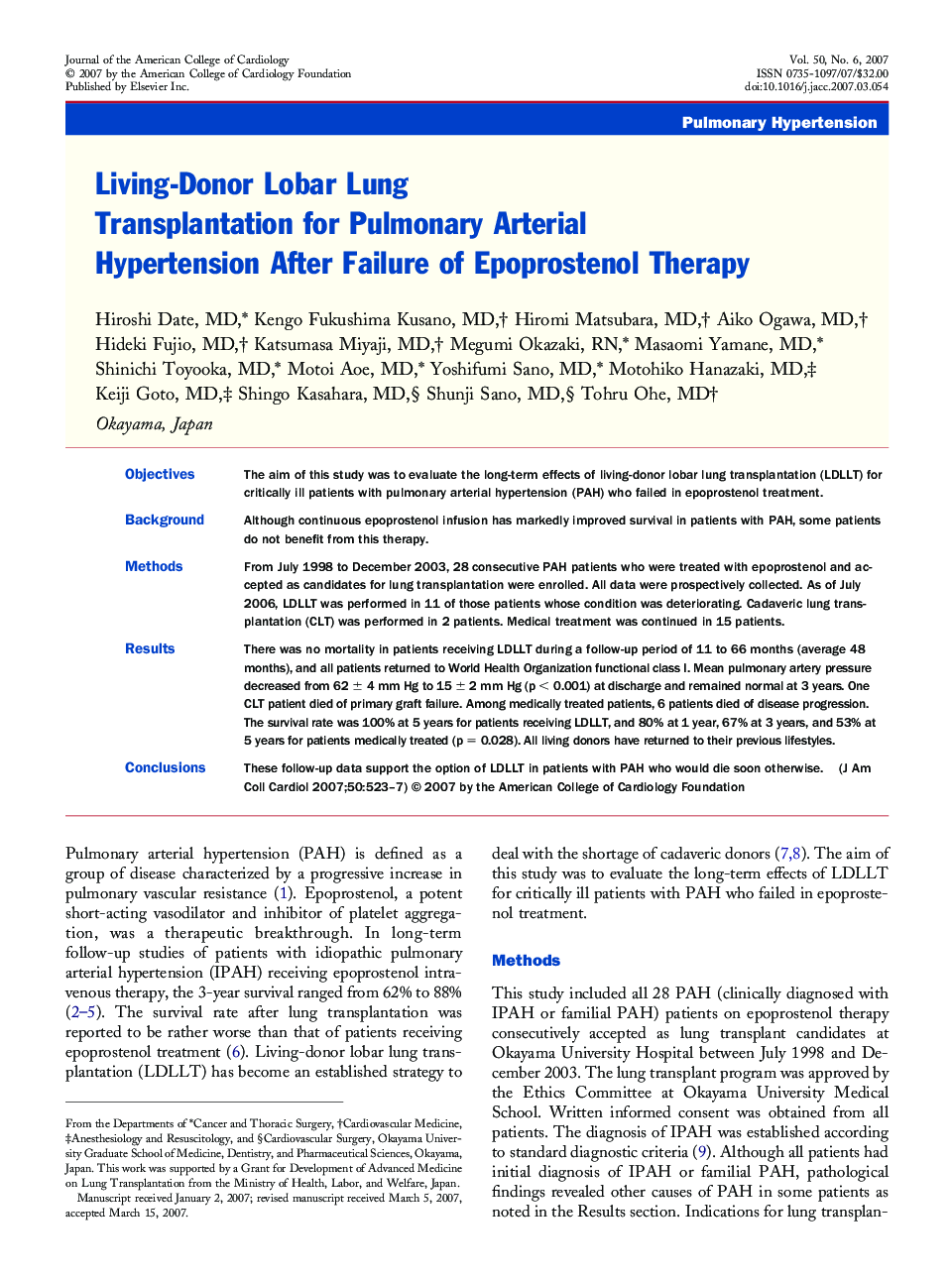| Article ID | Journal | Published Year | Pages | File Type |
|---|---|---|---|---|
| 2953357 | Journal of the American College of Cardiology | 2007 | 5 Pages |
ObjectivesThe aim of this study was to evaluate the long-term effects of living-donor lobar lung transplantation (LDLLT) for critically ill patients with pulmonary arterial hypertension (PAH) who failed in epoprostenol treatment.BackgroundAlthough continuous epoprostenol infusion has markedly improved survival in patients with PAH, some patients do not benefit from this therapy.MethodsFrom July 1998 to December 2003, 28 consecutive PAH patients who were treated with epoprostenol and accepted as candidates for lung transplantation were enrolled. All data were prospectively collected. As of July 2006, LDLLT was performed in 11 of those patients whose condition was deteriorating. Cadaveric lung transplantation (CLT) was performed in 2 patients. Medical treatment was continued in 15 patients.ResultsThere was no mortality in patients receiving LDLLT during a follow-up period of 11 to 66 months (average 48 months), and all patients returned to World Health Organization functional class I. Mean pulmonary artery pressure decreased from 62 ± 4 mm Hg to 15 ± 2 mm Hg (p < 0.001) at discharge and remained normal at 3 years. One CLT patient died of primary graft failure. Among medically treated patients, 6 patients died of disease progression. The survival rate was 100% at 5 years for patients receiving LDLLT, and 80% at 1 year, 67% at 3 years, and 53% at 5 years for patients medically treated (p = 0.028). All living donors have returned to their previous lifestyles.ConclusionsThese follow-up data support the option of LDLLT in patients with PAH who would die soon otherwise.
